Search
for
Sort by
Research
120-150 / 1000+ results
research The Effect of Topical Finasteride 0.5% on the Outcome of Diode Laser Therapy in the Treatment of Excess Facial Hair in Women with Hirsutism
Using finasteride 0.5% solution with laser therapy significantly reduces unwanted facial hair in women.

research Biomedical Versus Cultural Constructions of Abnormality: The Case of Idiopathic Hirsutism in the United States
The perception of excessive hair growth in women as abnormal is more influenced by cultural norms than by medical reasons.
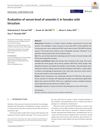
research Evaluation of Serum Level of Omentin-1 in Females with Hirsutism
Women with hirsutism have different levels of omentin-1, which may be linked to the condition and its genetic aspects.

research The Evaluation and Management of Hirsutism
Most women with excess hair growth have an underlying hormonal issue, often treated with medication and hair removal methods.

research Hirsutism: A Psychological Analysis
Women with excess body hair feel psychological distress influenced by societal beauty standards, but distress isn't directly linked to the amount of hair.

research Hirsutism and the Variable Response of the Pilosebaceous Unit to Androgens
Different women's hair and skin glands respond to hormones in varied ways, which can cause unwanted hair growth even with normal hormone levels, and more research is needed to treat this effectively.

research Endocrine Evaluation of Hirsutism
Women with excessive male-pattern hair growth should get a full hormone check-up to find and treat any underlying issues, considering both medical and emotional aspects.

research Prevalence of Dermatologic Manifestations and Metabolic Biomarkers in Women with Polycystic Ovary Syndrome in North China
Women with PCOS in North China often have hirsutism and acne, with hirsutism linked to metabolic issues.

research Hirsutism
Most women with excessive hair growth have PCOS; treatment varies and focuses on preventing new hair, with electrolysis as the only permanent removal method.
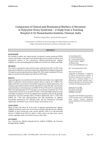
research Comparison of Clinical and Biochemical Markers of Hirsutism in Polycystic Ovary Syndrome: A Study from a Teaching Hospital in Sri Ramachandra Institute, Chennai, India
Women with PCOS have higher levels of certain androgens, which are good at predicting excess hair growth.

research A Study on Clinical Profile of Patients with Hirsutism
Most women with excess hair growth had Polycystic Ovary Syndrome, and severity wasn't linked to hormone levels.

research Hirsutism
Excessive hair growth in women, often from high androgen levels, is usually caused by PCOS, and can be treated with hair removal, medication, and possibly weight loss.
research An Approach to the Patient With Hirsutism
Most women with hirsutism have normal hormone levels and can be treated with cosmetic methods; obesity and PCOS are common causes, and treatments depend on the underlying issue.

research A Prospective Study of the Prevalence of Clear-Cut Endocrine Disorders and Polycystic Ovaries in 350 Patients Presenting with Hirsutism or Androgenic Alopecia
Most women with hirsutism or androgenic alopecia had polycystic ovaries, especially if they had irregular periods.
research Hirsutism
Hirsutism is when women have too much hair growth, often due to a bit more androgen hormones and sensitive skin.
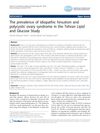
research The Prevalence of Idiopathic Hirsutism and Polycystic Ovary Syndrome in the Tehran Lipid and Glucose Study
About 13% of women had idiopathic hirsutism and 8.5% had polycystic ovary syndrome in a group of Iranian women.

research Testosterone in Women: Measurement and Therapeutic Use
Testosterone therapy can modestly improve sexual function in menopausal women but should be used cautiously and is not recommended for routine measurement in sexual dysfunction or hirsutism.

research The Evaluation and Management of Hirsutism
Hirsutism in women often indicates a hormonal imbalance and can be managed with a combination of hormonal treatments and hair removal methods.

research Finasteride in the Treatment of Hirsutism
Finasteride reduces hair growth in women with hirsutism and works better with electrolysis.

research Hirsutism
Most women with hirsutism have it because of PCOS, and they need long-term treatment including medication and hair removal to improve their condition.

research Outcome of Long-Term Treatment with the 5α-Reductase Inhibitor Finasteride in Idiopathic Hirsutism: Clinical and Hormonal Effects During a 1-Year Course of Therapy and 1-Year Follow-Up
Finasteride effectively reduces hair growth in women with idiopathic hirsutism, but requires careful contraception during treatment.

research The Clinical Evaluation of Hirsutism
Hirsutism is excessive hair growth in women often caused by polycystic ovarian syndrome, and identifying the cause is important for managing associated health risks.
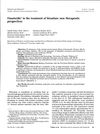
research Finasteride in the Treatment of Hirsutism: New Therapeutic Perspectives
Finasteride effectively treats hirsutism in women, but more research needed for long-term results.

research Hirsutism and Virilization
Excessive hair growth in women can be harmless or signal serious health issues, and treatment often includes medication and hair removal, with noticeable results after 3-6 months.

research Endocrine Evaluation of Hirsutism
Hirsutism, excessive hair growth in women, is often caused by PCOS and can be managed with medication and personalized treatment plans.
research Targeting Hirsutism: A New Approach
Eflornithine cream effectively reduces facial hair in women with hirsutism.
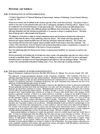
research Hirsutism and Baldness
Excessive hair growth in women can be treated with medications like spironolactone and finasteride, and male-pattern baldness in women can be improved with similar treatments.

research A Detailed Investigation of Hirsutism in a Turkish Population: Idiopathic Hyperandrogenemia as a Perplexing Issue
The main cause of excessive hair growth in Turkish women is Polycystic ovary syndrome, but in about one fifth of cases, the reason for high male hormone levels is unknown.

research Hirsutism
Hirsutism is excessive male-pattern hair growth in women, often caused by hormonal imbalances, and requires ongoing treatment to manage.